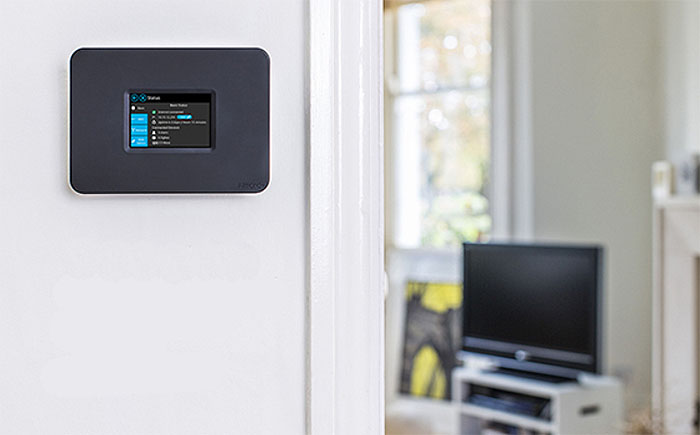The key word for almost every new released piece of technology is the word smart. We have smart phones, smart watches, smart vehicles (autonomous) and even smart houses. In a few years we may be able to witness smart cities (the game Watch Dogs touched this concept a bit).
From a technological point of view, smarthomes have existed for quite some time, although in a more primitive way and since science has evolved to such extent, we can finally be close to the dreamed wirelessly controlled futuristic home.
And 2015 was the best year for smart devices, heavily gaining a lot more popularity. Devices that let you control the heating system (like Nest, Hive or Heat Genius), smoke detectors (Nest Protect), motion sensors (SmartSense Motion Sensor) and a lot more other devices that support ZigBee and Z-Wave technology.
We used some of these devices when we tested a smart network using the Securifi ALmond+ Smart Hub, which had a cool way of adding rules (using an IFTTT system).
But, while all these sound promising, being able to remotely control everything in your home, there is the problem of security. What could stop a hacker to break into a system and mess everything up or stealing your data?
We would like to say that this problem has been solved, but unfortunately it hasn’t, not completely anyway. Once in awhile, on the news feed, we get yet another case of hacked webcam or personal info being stolen and it definitely sends shiver down the spine.
But, there are some ways to keep yourself protected.
First of all, the main issue is that lots of smart devices are based on old technology and therefore, are very vulnerable to hacker attacks. Second of all, customers may not be accustomed or just lack the knowledge to configure and maintain a smart home network.
In order to maintain a reasonably secure network, there are some basic things you can do:
Always update your devices to the latest firmware. It’s easy to forget about your smart devices, especially your router (how many times have you checked if your router is up to date?), so it’s extremely important to keep all your devices up to date.
Always change your passwords and you should create strong passwords (especially on your router, always change the default password and make sure it’s strong enough). But you should be aware that strong passwords don’t necessary equal good security, a bug left unpatched by the manufacturers will leave you wide open to attacks.
Be sure that the devices that you purchase have the latest security features implemented (for example, WPA2 proves to be the best choice so far).
If you are tech-savvy or just feel adventurous, you could try to install DD-WRT on your older routers, as it can increase the security, especially if it’s a cheaper router, but be aware that it isn’t an easy feat to pull off (make sure to download the correct firmware, otherwise you risk to brick your router).
If not needed you should disable the remote control of your devices, or at least limit the IP addresses that will access the hub (also be aware of any DNS changes) – also it’s best to have a locally run network that won’t rely on an Internet connection.
Note: Securifi Almond+ offers a locally run network, so your devices will work, no matter if you are connected or not to Internet.
So, if you want to have a secure smart home, these are the basic things you can do in order to fully enjoy all these cool devices that make our life a lot easier.

Mark is a graduate in Computer Science, having gathered valuable experience over the years working in IT as a programmer. Mark is also the main tech writer for MBReviews.com, covering not only his passion, the networking devices, but also other cool electronic gadgets that you may find useful for your every day life.

